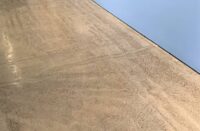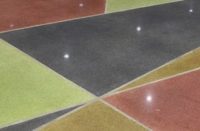There are ways to evaluate a floor for polishing before quoting it. You will need to develop benchmarks (on test floors you’re currently polishing) before you can accurately predict how a future floor will polish and what densifier to use on the floor.
The first tool I would recommend every polishing contractor obtain is a Schmidt hammer, also known as a Swiss hammer. It’s a simple nondestructive testing device that will give you instant data about concrete’s elasticity and strength — and thus, its polishability.
After you gain an understanding of the correlation between psi and polishability, you have a sense of how (or if) a floor will polish and to some extent the material costs to polish. A low-psi floor means more densifier is required, while a high-psi floor means more diamond usage, especially if aggregate exposure is required.
Another simple test you can perform is an acid resistance test. The higher the pozzolan load in the floor, the lower the amount of free lime available and the more acid-resistant the concrete will be.
You’ll have to develop benchmarks for acid resistance. This will help guide your choice of densifiers or a blend of densifiers — the denser and more acid-resistant the concrete is, the more I’d be inclined to lean towards colloidal silica instead of a lithium silicate. If the acid foams green on contact, you know you have plenty of free lime for lithium silicates to work with. This test will also reveal any polymer concrete or portland-free concrete you may encounter.















